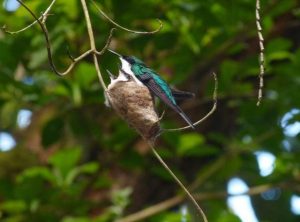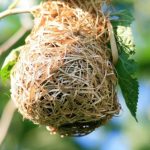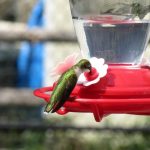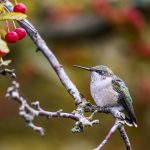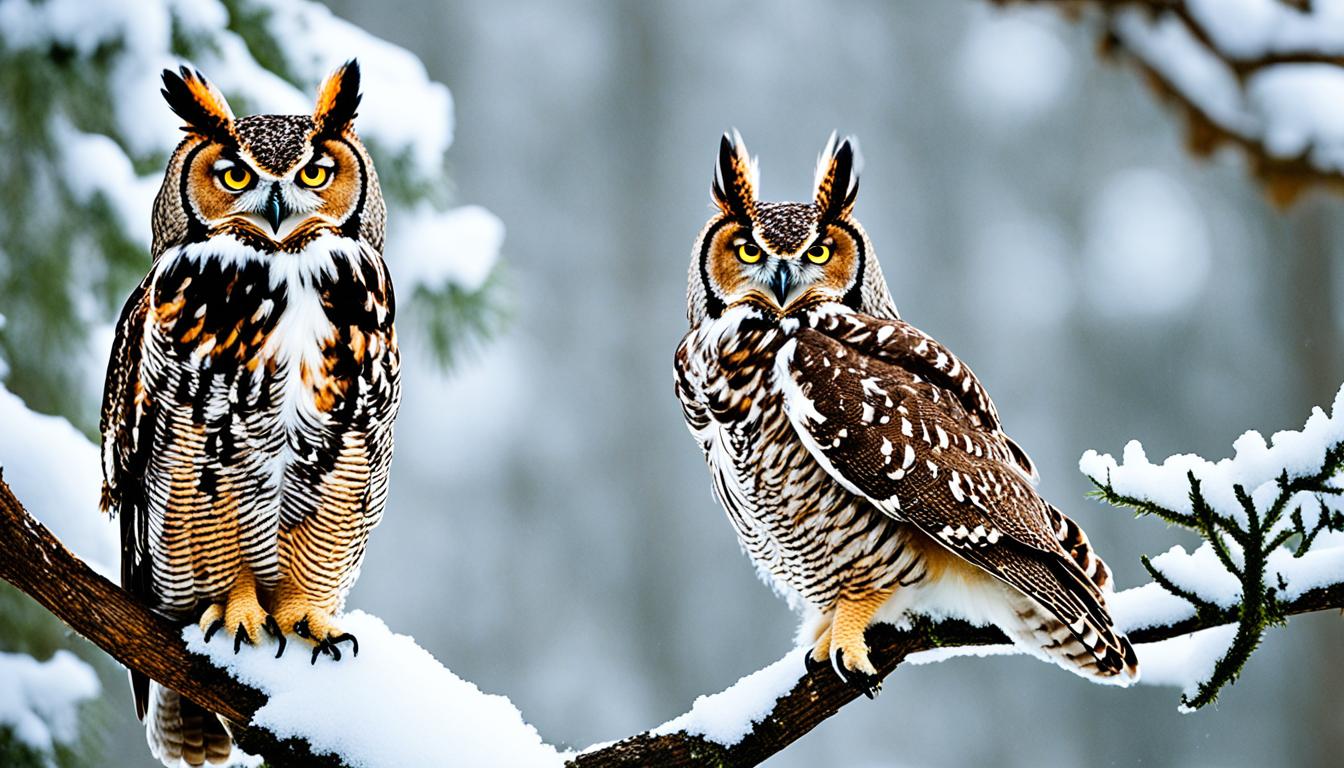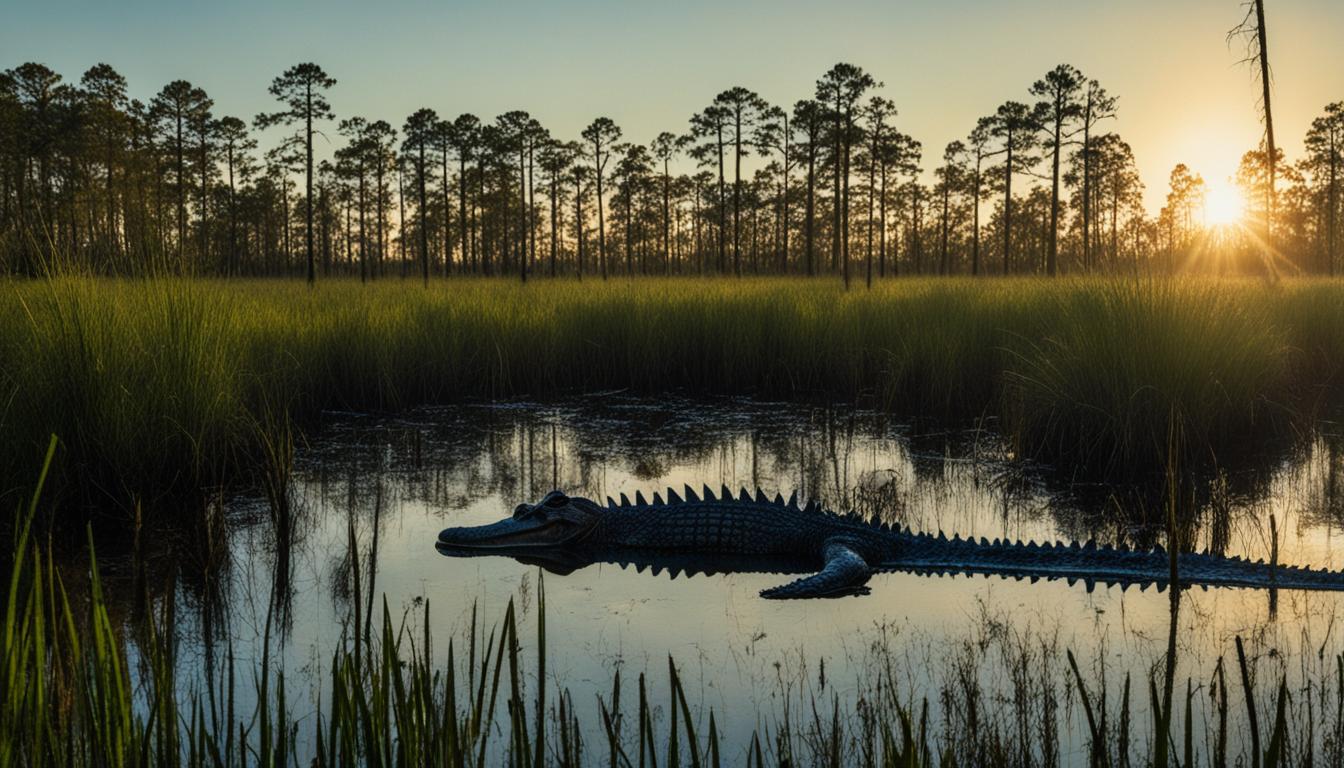It is ideal to place a hummingbird nest within easy reach so you are able to clean and refill it routinely. Avoid hanging nests too high or deep in a thick flowerbed that is hard to access.
If the nests are handy, you will be able to maintain them better. You can also hang a Hummingbird nest under the roof, on a sheltered tree branch, on a hanger outside, and in your garden. Generally, hummingbirds prefer high places so you have to hang the hummingbird nest at a high level.
Look for Hummingbird Nests on Amazon Here
What Trees Do Hummingbirds Nest in?
Favorite deciduous trees for hummingbird nests tend to be oaks, sycamores, maples, birch, poplar, elm, and fruitless mulberry.
Hummingbirds normally make their nests approximately 1 1/2 feet from the end of a slender branch in a fork in the branch. They often construct the nest above a body of water, which further cools the region.
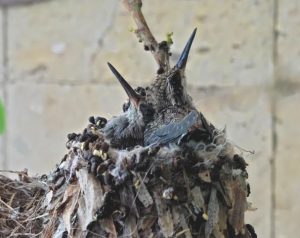
While some species, such as the Ruby-throated Hummingbird, have adapted to urbanization by nesting on wires, plant hangers, and other man-made things, the majority prefer the shade of deciduous trees near water.
Tree foliage offers shade for the parents and their chicks, while the water helps to keep the area cool.
Hummingbirds also need to reside near food supplies, particularly nectar-rich flowering plants – another reason why places near water are essential for hummingbirds in arid areas.
Due to the tiny size of hummingbird nests, you’re not likely to locate one in the crook of a huge limb. Instead, hummingbirds like to “set up shop” on thinner branches around one foot from tree trunks, frequently near a fork.
How Do I Attract Hummingbirds To Nests In My Yard?
Making sure your yard is hummingbird-friendly is the first step to attracting nesting hummingbirds. To do so, your yard should provide the appropriate food and water, as well as shelter and the appropriate colors to welcome them in.
Food
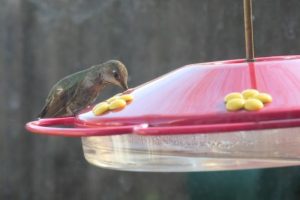
Hummingbirds have relatively rapid metabolic rates, so they are very hungry. In reality, they may feed every 10 to 15 minutes, visiting a thousand or more blossoms every day.
To meet their demands, nectar-producing flowers (try bee balm, sage, and honeysuckle) and hummingbird feeders are excellent choices. They also adore spiders and other insects. The insects also offer the required protein for the mother bird to feed her developing young.
Buy a Hummingbird Feeder From Amazon Here
Shelter
Hummingbirds may appear to be continually on the run, but enough perching areas, protected trees, and bushes can help them feel safe and comfortable.
Plants that give protection from the sun, wind, and rain are also good sites for a hummingbird nest. Thorny plants are another great alternative that may give protection from hummingbird predators as well.
Water
Hummingbirds like misters and bubblers for water sources, and adding one or more of these in your yard will make the area appealing to the birds. Ideally, arrange a mister or dripper so the water pools on a wide leaf, and hummingbirds may brush against the leaf for a brief bath.
Buy a Garden Mister From Amazon Here
Colors
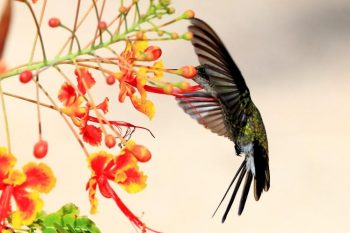
Hummingbirds are attracted to bright colors like red. Plant red flowers, add a red gazing ball, or place other decorative accents in your garden to catch their attention.
Other bright colors, such as orange, pink, or purple, can also help attract hummingbirds. For example, grow nectar-rich, tubular flowers in these colors to attract hummingbirds.
Making Your Yard Safe
Even the loveliest yard may still be detrimental for these small birds, and a hazardous zone is not a place where hummingbirds would prefer to nest. Fortunately, there are basic things to take to make your yard suitable for nesting hummingbirds.
Reduce the Number of Feeders
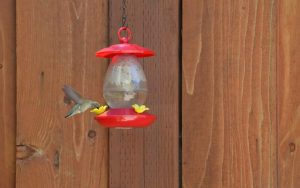
Too many feeders will draw a big swarm and can hinder nesting. Similarly, avoid too many feeders with seed or suet for other larger bird species that hummingbirds might perceive as threatening, such as sparrows or finches, or locate feeding areas for the other birds well away from ideal hummingbird nesting spots.
Avoid Pesticides or Insecticides
These objects not only harm essential food supplies but also carry toxins that may be lethal to birds. Similarly, don’t use too many chemicals on your lawn or garden, such as fertilizers and insecticides. Even though the chemicals are meant to be beneficial, if they are supplied incorrectly, they may be detrimental to these small birds.
Control Harmful Insects
Small insects may be good food for hummingbirds, but wasp or hornet nests can be harmful to these small birds. Praying mantises may also attack hummingbirds, so transfer these enormous insects away from hummingbird-friendly locations.
Control Predators
Cats, dogs, snakes, and other predators disturb breeding hummingbirds. If indicators of predators are present in your yard, hummingbirds will avoid the area when they hunt for nesting locations.
Do Hummingbirds Come Back To The Same Nest Every Year?

Some birds will return to the same nest and add to it from season to season, or from one clutch of eggs to the next.
But hummingbird nests, built from twigs and cobwebs, are incredibly fragile and generally do not live through a single mating season.
But it’s doubtful the hummingbird would nest in precisely the same area as previously.

Many hummingbirds don’t tend to return back to the same nest again and again.
In fact, their nests are sometimes not robust enough to be able to endure for a whole season, much alone more.
That so, hummingbirds do return maybe once more in a season if they absolutely have to.
It takes around 5 days for the hummingbird to construct a nest Anna’s hummingbirds in California do not reuse nests but are notorious for “recycling” their own nest material or pirating that of others to create a completely new nest.
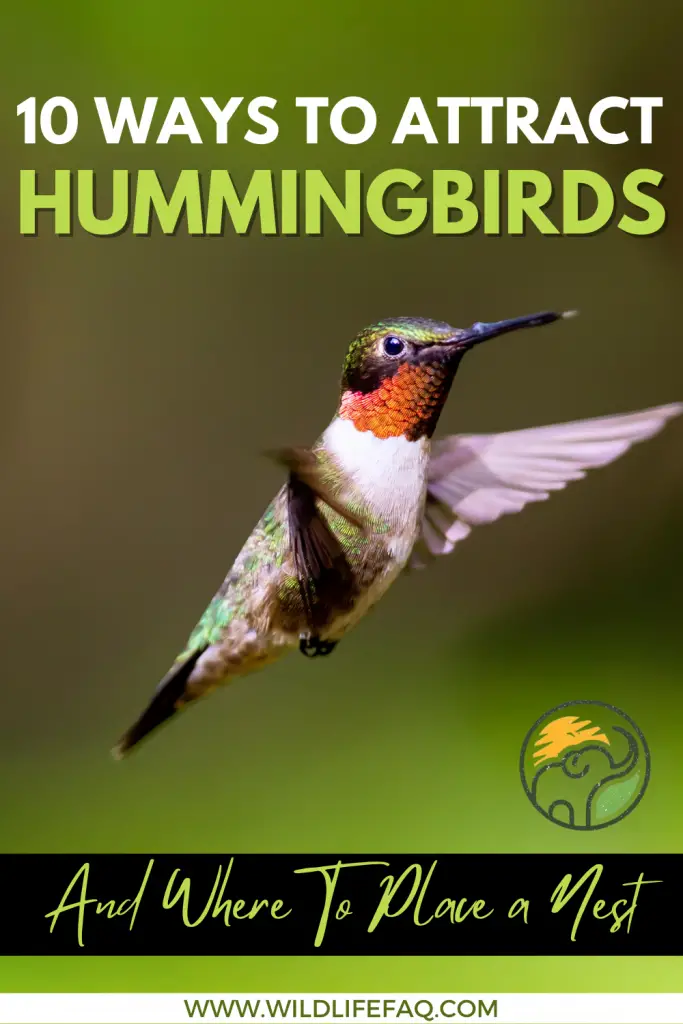
Keywords: Ruby-throated Hummingbird; Honey suckle; Nest; Predators

